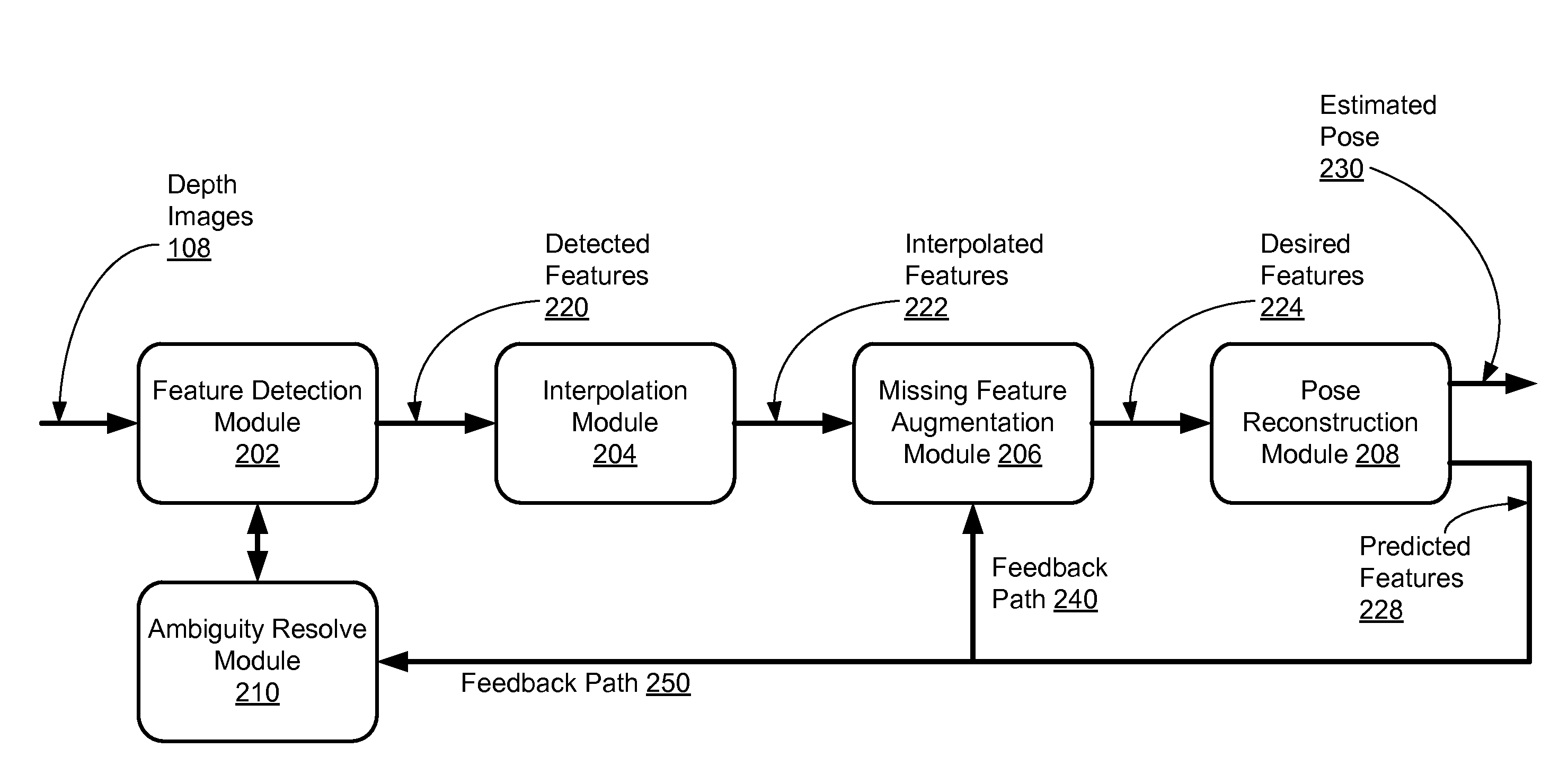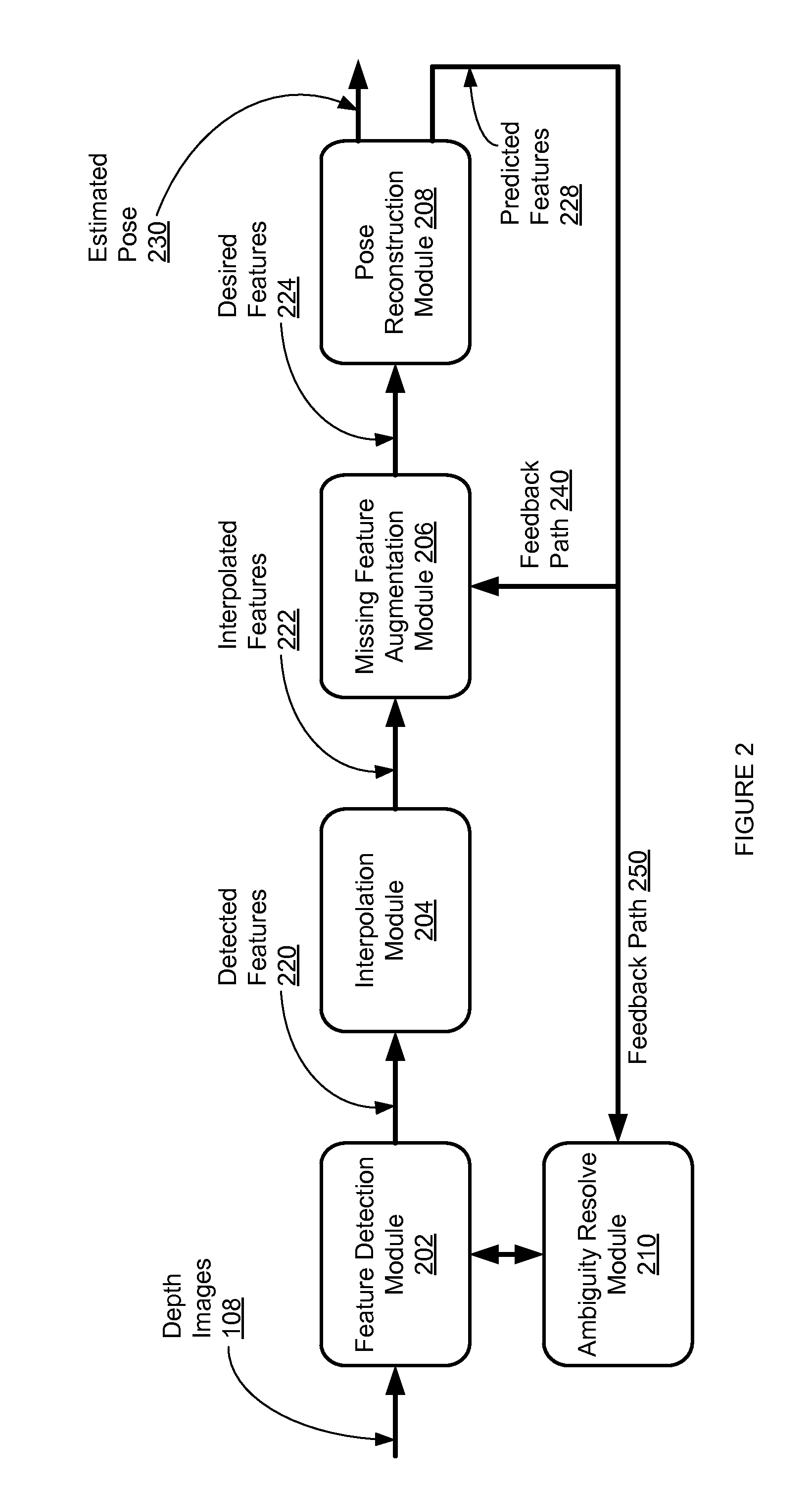Body feature detection and human pose estimation using inner distance shape contexts
a technology of inner distance shape and feature detection, applied in the field of tracking motion of systems, can solve the problems of large number of degrees of freedom recovery, difficult problem of human pose recovery, compounded difficulties
- Summary
- Abstract
- Description
- Claims
- Application Information
AI Technical Summary
Benefits of technology
Problems solved by technology
Method used
Image
Examples
example
[0084]One embodiment of the disclosed human pose estimation system is tested using a single TOF camera. Two human body motion sequences are captured by the TOF camera and fed into the human pose estimation system. Snapshots of the first sequence are shown in FIG. 8A, and snapshots of the second sequence are shown in FIG. 8B. As shown in FIG. 8A, the following seven key feature points are manually labeled in the snapshots of the first sequence: head top, left shoulder, right shoulder, left elbow, right elbow, left hand, and right hand. IDSC Descriptors of these key feature points are calculated to construct the IDSC gallery. The human pose estimation system then detects the key feature points in the second sequence by sampling contour points and comparing their IDSC descriptors with the IDSC gallery. The human pose estimation system achieved 85% detection rate with an eight-pixel neighborhood support comparing with the ground truth. The key point detection is accepted as correct if t...
PUM
 Login to View More
Login to View More Abstract
Description
Claims
Application Information
 Login to View More
Login to View More - R&D
- Intellectual Property
- Life Sciences
- Materials
- Tech Scout
- Unparalleled Data Quality
- Higher Quality Content
- 60% Fewer Hallucinations
Browse by: Latest US Patents, China's latest patents, Technical Efficacy Thesaurus, Application Domain, Technology Topic, Popular Technical Reports.
© 2025 PatSnap. All rights reserved.Legal|Privacy policy|Modern Slavery Act Transparency Statement|Sitemap|About US| Contact US: help@patsnap.com



